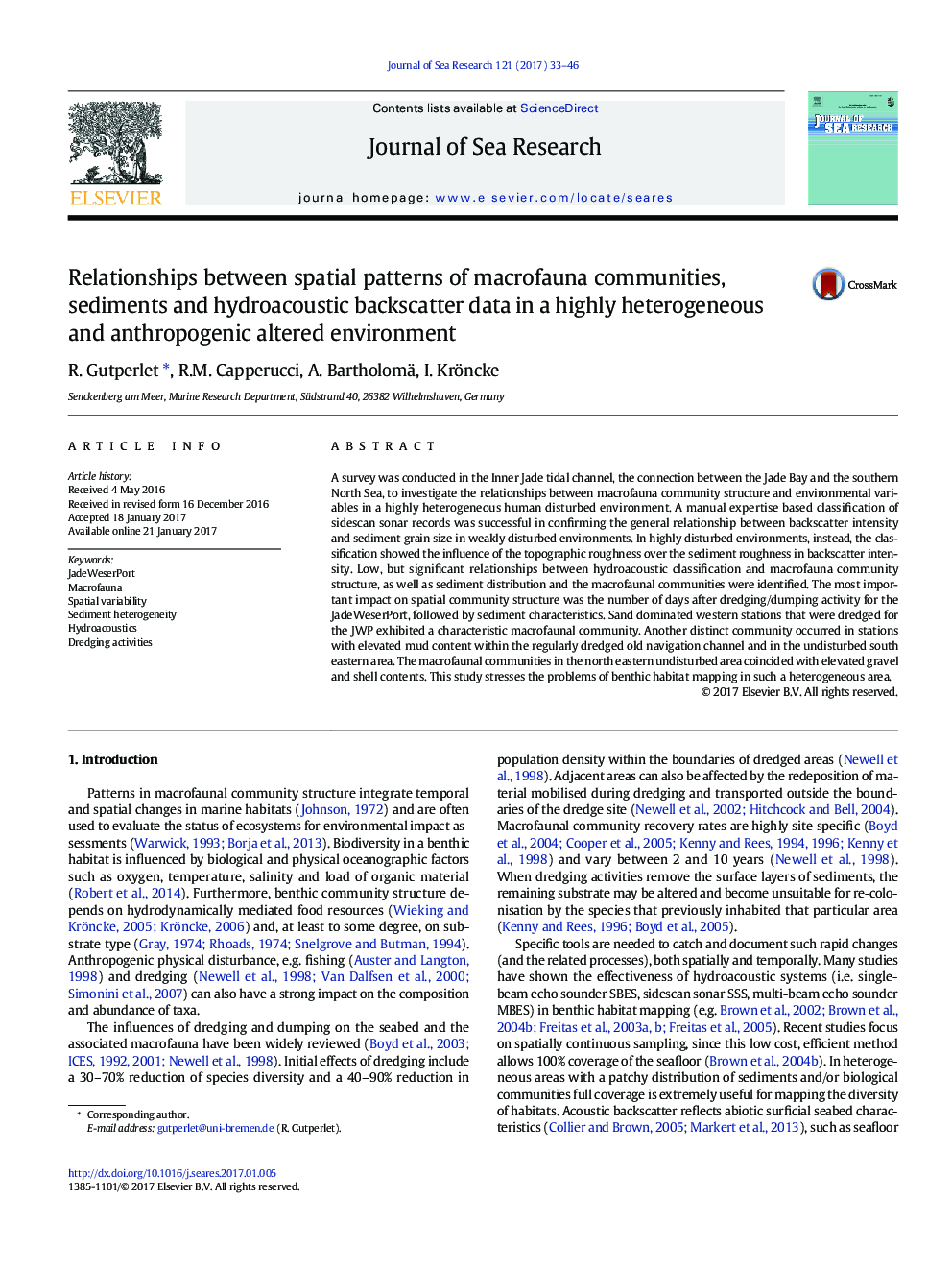| Article ID | Journal | Published Year | Pages | File Type |
|---|---|---|---|---|
| 5766037 | Journal of Sea Research | 2017 | 14 Pages |
Abstract
A survey was conducted in the Inner Jade tidal channel, the connection between the Jade Bay and the southern North Sea, to investigate the relationships between macrofauna community structure and environmental variables in a highly heterogeneous human disturbed environment. A manual expertise based classification of sidescan sonar records was successful in confirming the general relationship between backscatter intensity and sediment grain size in weakly disturbed environments. In highly disturbed environments, instead, the classification showed the influence of the topographic roughness over the sediment roughness in backscatter intensity. Low, but significant relationships between hydroacoustic classification and macrofauna community structure, as well as sediment distribution and the macrofaunal communities were identified. The most important impact on spatial community structure was the number of days after dredging/dumping activity for the JadeWeserPort, followed by sediment characteristics. Sand dominated western stations that were dredged for the JWP exhibited a characteristic macrofaunal community. Another distinct community occurred in stations with elevated mud content within the regularly dredged old navigation channel and in the undisturbed south eastern area. The macrofaunal communities in the north eastern undisturbed area coincided with elevated gravel and shell contents. This study stresses the problems of benthic habitat mapping in such a heterogeneous area.
Related Topics
Physical Sciences and Engineering
Earth and Planetary Sciences
Oceanography
Authors
R. Gutperlet, R.M. Capperucci, A. Bartholomä, I. Kröncke,
